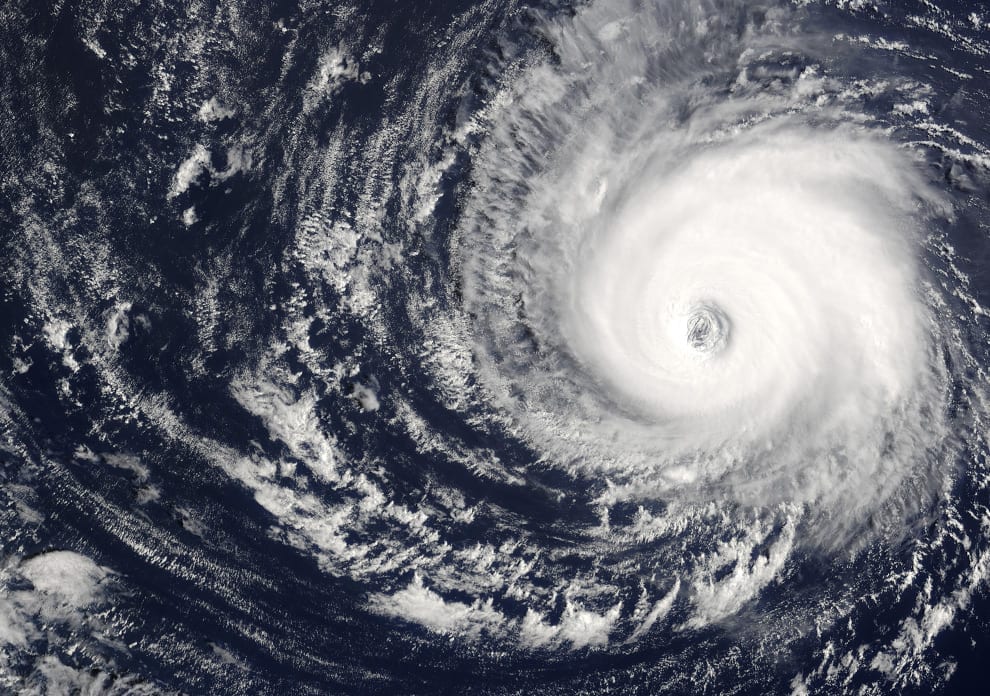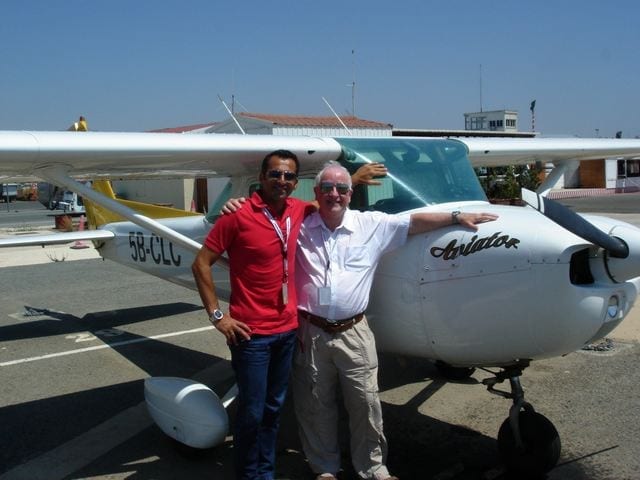Flying internationally has its challenges. Culture issues arise, new risks and threats need management as you cross borders. In the West, there exist synergies between weather services and Air Traffic Control. This is something we take for granted. In other parts of the world, not so much. Below is a story of one such time where a latent threat could have caused an undesirable state.
On that day, we flew to Tunis Airport (DTTA), the airport that serves the capital of Tunisia. North Africa, in contrast to sub-Saharan Africa, is more Mediterranean. The scenery matches the image conjured by the word Mediterranean. It is a beautiful country that the Arabs have nicknamed, “The green one.” There is even a type of stone named after it: the “Tunis Green Granite.”
Tunis airport sits right off the Mediterranean, and has two intersecting runways: 19/01 and 11/29. Two intersecting runways is usually a welcome sight when reviewing an airport. Two runways at 90 degrees off each other means that you will not need to land with an unfavorable winds. At least that is what I thought.
We started our joint briefing in our crew briefing center with a look at our route and our weather charts. They indicated significant weather activity near the time of our arrival. There was also extensive weather en route. The airport was forecasting good flying weather until well after we landed. The conflict between the two wasn’t unsettling to me. In hindsight, it should have been.
The dispatcher had loaded us with another 15 minutes of extra fuel. This is not very unusual, but it did seem excessive to me. The other pilot joked that the airport is definitely not on his top 10 list. He has had a bad experience on a previous flight and he didn’t trust their forecast.
I still thought the fuel was unnecessary, but I didn’t vocalize it then. I thought my colleague was being difficult to the forecasters. Even the best forecast cannot be 100% accurate but we shouldn’t lose trust.
We had a normal pre-flight preparation and boarded 100-odd passengers. We had an uneventful flight but we kept an eye on the weather conditions in DTTA. Despite the good forecast, the actual conditions seemed to change by the minute. The 30-minute updates to the METARs showed consistent TCUs or CBs. Towering Cumulus and Cumulonimbus are not the most popular clouds among pilots. They are not my favorite either.
200 miles from our destination, we started seeing radar returns. Clouds seemed to be around and near the aerodrome. We requested radar vectors to avoid the worst parts. The latest ATIS information we got from our datalink was 20 minutes old. We were to expect a VOR approach for Runway 11 with the wind coming at us from 140 degrees at 28 knots. Not too bad. Our avionics had the VOR approach in the database and while not an ILS, it still wasn’t bad.
We briefed for that and set up our primary flight plan for it. We also set up our plan “B” which is runway 19 and briefed for that as well. It had an ILS and the main part of the approach was over the sea.
Coming closer to the aerodrome, we saw another cell of weather overhead the aerodrome. The controller told us that the runway in use was now 19. We also started getting radar headings to sequence us in the flow.
We activated plan B and reviewed it again. The weather radar was making us anxious—the activity over the aerodrome seemed to be intensifying.
I heard the controller give a plane coming from the east instructions to proceed to NIREM. That is the initial approach for runway 29 and is around the same area of weather that we thought prudent to avoid. We were starting to figure that the weather returns on our radar were not accurate. Since it was an approach for runway 29, the winds must have changed. We checked the wind again and it was coming from 240 at 15 knots.
The other pilot in the cockpit, meanwhile, seemed uncomfortable with our heading. It was taking us into an area of activity and we asked the busy controller for a different heading. He challenged us about our desired heading, which further added to our doubts. It seemed to us that the controller was doubting our weather radar’s returns. We got the heading we asked for but our certainty in the weather radar was eroding.
A few minutes later, we heard the airplane that had commenced the approach for runway 29. It was announcing that it had performed a go-around due to wind shear on short final. Before we could ask for a change of runway, the controller re-cleared us to a new heading. It would have taken us on a downwind for runway 01.
That seemed like a good course of action. We built that approach in the FMS and we briefed it. We were aware of the surrounding terrain and the airport from the previous briefing. This rushed our briefing
We asked for a wind check but we got 240 at 15 knots again. We didn’t feel that it was correct, but according to our calculations, we were within the 10 knot tailwind limit. The radar was adamant that the aerodrome was topped by weather. We disregarded it and elected to go for an approach.
We continued with the vectoring to the ILS and then switched over to the tower. The tower cleared us to land with a wind reading of 290 at 25 knots, gusting to 30 knots.
We captured the ILS and were descending on the glideslope. Passing a thousand feet and descending, the wind seemed to dance all over the place. At 500 feet, we didn’t feel comfortable with the approach; the airplane was dancing all over the place. We exchanged one look from across the cockpit and knew we had to go around.
We asked for some vectoring and picked up a hold for around 10 minutes. We then shot another approach, which was much more to our liking as the weather subsided.
We landed and gave the cabin crew the go-ahead for disembarkation. We then had a small recap in the cockpit. We both reached the same conclusions, albeit through separate paths.
We were always taught to trust our instruments. We had started to doubt our weather radar with little reason. My colleague didn’t trust the airport’s forecast and we had information to the contrary of it. We were lucky the dispatcher had loaded up some extra fuel for us. We could have been in a far more precarious situation if we hadn’t had that. We wouldn’t have loaded the fuel ourselves as we failed to practice proper CRM.
CRM is about using all your resources. We failed to use the tower wind readouts or we would have asked for runway 29. The tower controller read-outs come from equipment near the runway. The approach sector was using reports from another source. The final knock came from failing to use our experience.
My colleague didn’t trust their forecast because of previous experience. I knew that we had more options but allowed the controller to rush us into accepting an approach to an airport experiencing wind shear.
Yes, doubt has its place in aviation, but we should always try to err on the side of safety. Risk taking, on the other hand, has no place in aviation.
- Err on the side of safety: how I relearned this lesson - June 22, 2020














Ralph, your dispatcher wanted to give you fifteen minutes of extra fuel – and you were complaining? You’d have loved flying with me. I fly domestic (US) and if I saw anything less than ONE HOUR of extra fuel on my dispatch release I’d be on the phone with my dispatcher so fast your head would spin. Weather deviations, vectors off course for “spacing”, ATC reroutes, needing to descend for chop with the concurrent higher fuel burn rate – I couldn’t tell you how many times in my career that extra gas paid for itself. Just my opinion, but fuel = time and time = options.